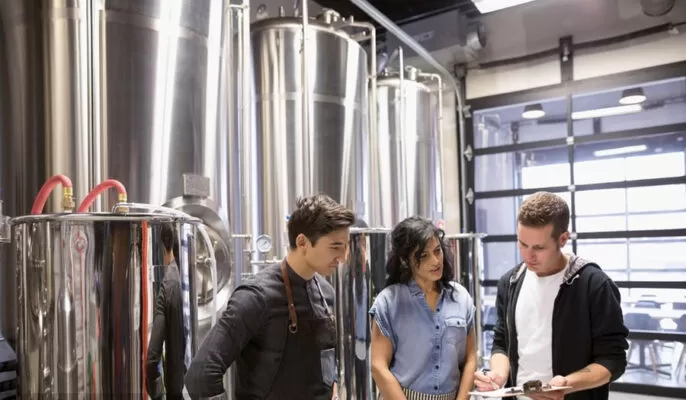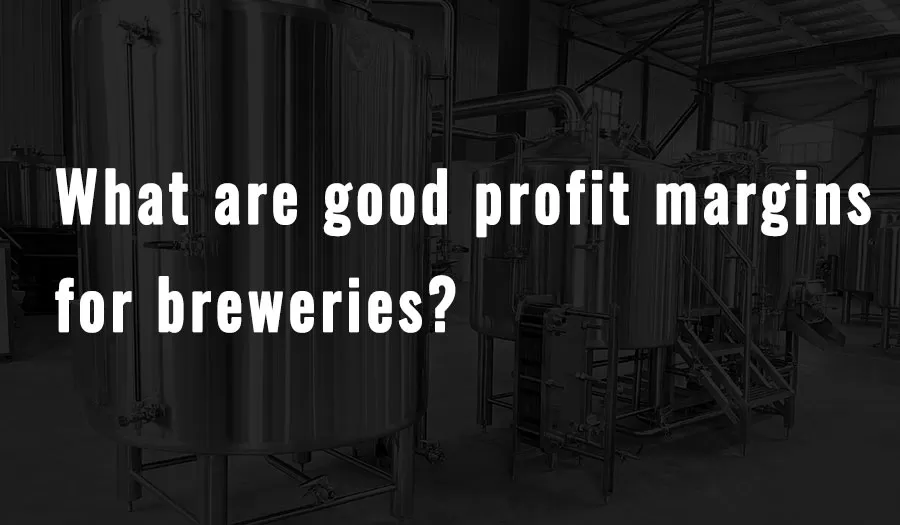If you’re planning to start a brewery, you’re wondering how much profit you can make from this business. In other words, you have to know how much revenue you have to generate to break even and make a profit.
The profit margin for a beer brewery can vary depending on a variety of factors, such as the size of the brewery, the type of beer being produced, and the distribution channels used. However, in general, the profit margin for a brewery can range from around 10% to 25%.
This is even more so in the microbrewery business, as quantities can vary depending on the configuration of your business. In this article, we’ll break down the differences and help you determine what a “good” brewery margin is for your business.
What is Brewery Profit Margin?
Profit margin is one of the most used formulas to measure the profitability of a business. It represents what percentage of sales have been converted into profit and depends on the operating costs required to run the business.
Profit margin (%) = (profit ÷ sales dollars) × 100
Brewing is a labor-intensive ordeal, or if automated, requires significant capital investment.
The This means, your brewery’s profit margins will vary depending on how your business is set up.
If you spend a lot of cash upfront investing in advanced technology that itself does a lot of labor, your monthly brewery profit margin will be “better” than paying labor costs monthly.
What is the average profit margin for a brewery?
For breweries, there are 3 different profit margins:
- Gross margin: revenues minus all Cost of Goods Sold (COGS) expenses (malt, hops, etc.)
- EBITDA margin: revenues minus all operating expenses (COGS, salaries, rent, etc.)
- Net profit margin: revenues minus all expenses (COGS, salaries, rent, corporate taxes, etc.)
How much does it cost to run a brewery?
There are certain recurring costs involved in running a brewery, including:
- Raw materials: You have to buy raw materials for your brewery and they constitute the biggest cost
- Packaging: Packaging is the second largest expense, accounting for 10% of sales
- Rent: You have to pay rent for the commercial space used for brewing
- Employee Salary: You have to pay your employees
- Insurance: You will need mandatory general liability insurance and other types of policies
- Marketing: You need to spend money on marketing and advertising to gain awareness and build trust
What Are Good Brewery Margins?
The average profit margin for a brewery is usually around 20%. Compared with restaurants, breweries must more investment in beer equipment and personnel. Simple maintenance costs can vary . A restaurant owner might need to replace a dishwasher, while a brewery owner might need to replace a $30,000 water tank.
Breweries need a lot of cash upfront, and they also have to reinvest that money year after year to keep up with growth and demand, so brewery owners rarely make money off high profits.
This means that 20% of profits are reinvested back into the business rather than being distributed to the owner as personal income.
This is important to understand, especially if you are financing your business through debt or outside investors. They need to know that any early returns will need to be reinvested.
How to increase the profit margin of the brewery?
cost control
Breweries can also maximize their profit margin by controlling their costs and optimizing their production process. This can include using energy-efficient equipment, minimizing waste, and managing their inventory to reduce spoilage and waste. Additionally, breweries can increase their revenue and profit margins by offering additional products and services, such as merchandise sales, brewery tours, and food sales in their taproom.
Expand sales channels
One way that breweries can increase their profit margin is by expanding their distribution channels. By selling their beer in more markets and through more channels, breweries can increase their revenue and profit margins. But, expanding distribution can also result in increased costs, such as marketing and sales expenses, and may must more investments in production equipment and facilities.
Build brand awareness
Increased brand awareness can increase sales and organizational success, thereby increasing market share.
increase influence
Consider listing in liquor stores, and using online delivery and e-commerce to maximize your reach.
Overall, brewery profit margins can vary widely based on some factors.
By controlling costs, expanding distribution channels, etc., breweries can maximize profit margins and achieve long-term success in the highly competitive beer market.




